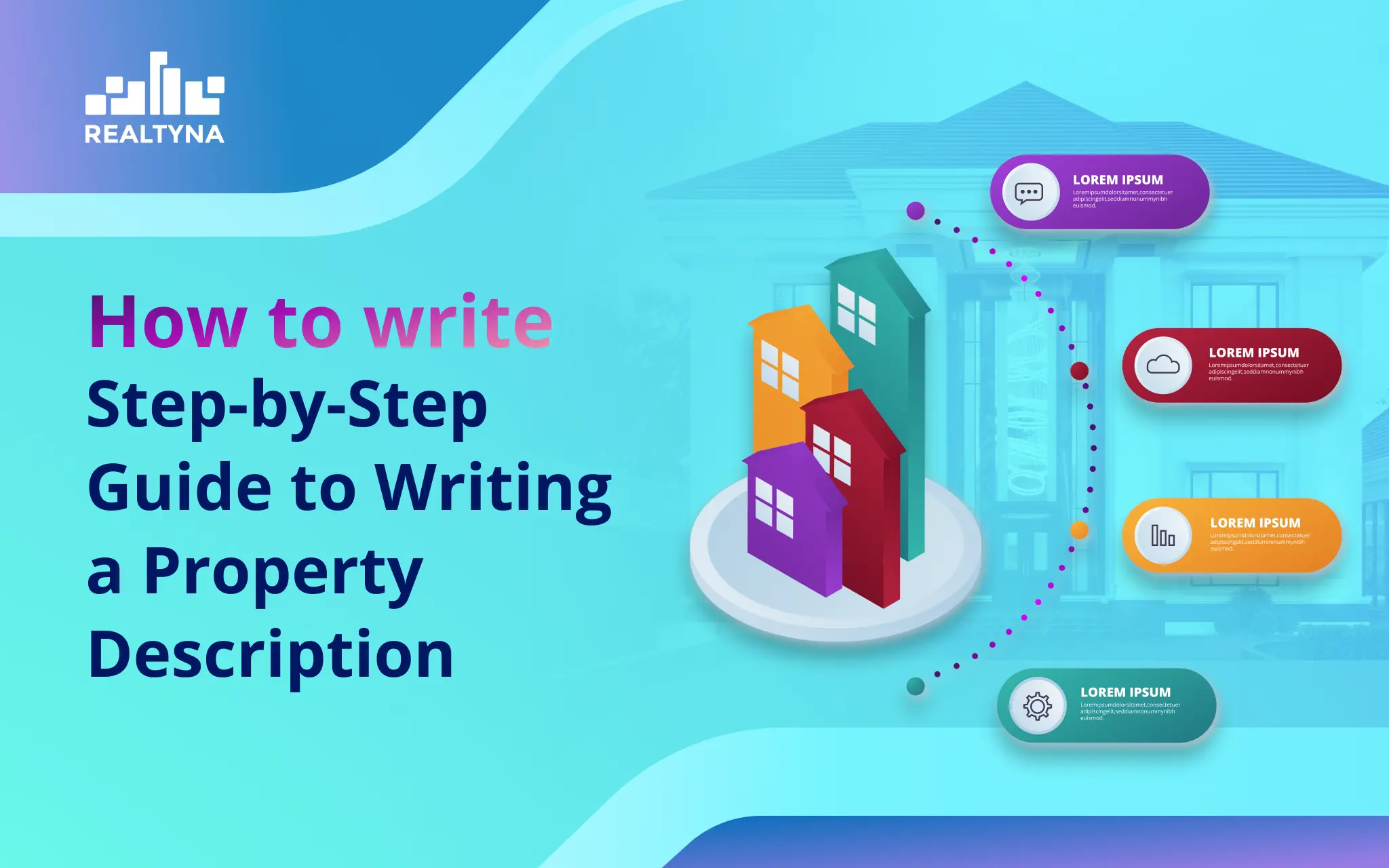
How to Write Compelling Property Descriptions?
You know that writing compelling property descriptions is essential for attracting buyers.
But, where to start?
This step-by-step guide walks you through the process of creating stunning property descriptions that capture attention and drive engagement.
You’ll be ready to write listings that showcase properties in the best possible light.
Why Writing a Good Property Description Matters
Because: An engaging property description allows you to highlight the best features of your listing and attract interested buyers. With a well-written summary of the key details, you’ll capture the attention of more potential buyers browsing online listings.
Because: A compelling description paints a vivid picture of the property in the reader’s mind. This leads to more viewings as interested parties want to see the place in person. The more viewings you get, the higher the chance of receiving an acceptable offer.
Because: With a robust description emphasizing the property’s best qualities and unique attributes, you’ll elicit emotional reactions from readers. This often translates into a faster sales process at a higher selling price as buyers get into a bidding war to obtain their dream home.
Because: A thoughtful description provides an accurate sense of what the property is like. This avoids disappointment upon viewing and ensures that only genuinely interested parties will schedule a showing. It also reduces the risk of low offers from buyers with unrealistic expectations.
Elements of an Effective Property Description

Precise Language
When writing a property description, use concise yet compelling language to capture the reader’s attention. Be specific about the key features and amenities.
For example, instead of saying the kitchen has “nice” appliances, specify that it has stainless steel or granite countertops and high-end appliances. Use precise language and an enthusiastic tone to help readers visualize the space.
Evocative Imagery
Help the reader experience the property through vivid descriptions that appeal to the senses. Mention the beautiful hardwood floors, the spacious bedrooms flooded with natural light, the private backyard oasis perfect for entertaining, or the open-concept living area ideal for relaxing. Using sensory language helps readers connect emotionally with the property.
Key Features and Specifications
While imagery and language are important, a property description must also include the key features, facts, and specifications about the space.
Provide details on the number of bedrooms, bathrooms, square footage, lot size, garage spaces, storage areas, and so on. Also specify any recent upgrades like a new roof, HVAC system, windows, or flooring. These important details give readers a comprehensive understanding of what the property offers.
Call the Reader to Action
End the property description with a strong call to action to schedule a showing or submit an offer.
For example, say something like “This stunning property won’t last long—contact us today to schedule your private tour!” or “Don’t miss this rare opportunity—submit your best offer now!” A compelling call to action motivates interested readers to take the next step.
Step-by-Step Guide to Writing a Property Description
1. Describe the Property Type and Location
To begin, specify whether the property is residential or commercial and its precise location. For residential properties, note the number of bedrooms and bathrooms. For commercial buildings, specify the property type, such as retail, office, or industrial space. Provide the street address and general neighborhood information.
2. Highlight Key Features and Amenities
Discuss the most appealing features of the property, such as spacious rooms, high ceilings, natural light, storage space, or outdoor areas.
Note any amenities like parking, security systems, or recreational facilities
Mention recent upgrades like new flooring, painting, or appliances.
Keep descriptions concise while highlighting why the features and amenities would be attractive to potential buyers or tenants.
3. Specify Dimensions and Include Relevant Measurements
Provide exact or approximate square footage for the overall property and individual rooms.
Note ceiling heights. For commercial properties, include specifications like the number of parking spaces, electrical capacity, or loading docks.
Residential listings should mention lot size and dimensions. Precise measurements allow potential buyers or tenants to easily determine if the space will suit their needs.
4. Proofread and Edit for Clarity
Carefully proofread your property description to ensure there are no errors or inconsistencies.
Get feedback from others to identify any areas that could be clearer or more compelling.
Make necessary edits to create a polished, impactful description that will motivate viewers to take the next step.
Property Description Template and Examples

Here are some short examples of what we said:
Residential Property
This four-bedroom, three-bathroom single-family home offers 2,500 square feet of living space. The open floor plan features high ceilings, hardwood floors, and an updated kitchen with stainless steel appliances. The spacious master suite includes a walk-in closet and remodeled en suite bathroom.
The large fenced backyard has a deck, swimming pool, and jacuzzi, perfect for entertaining. The home is located in the desirable Hillcrest neighborhood, close to downtown shops and restaurants, walking trails and public parks. It is within walking distance to top-rated schools and minutes from the freeway.
Office Space
This 1,500-square-foot office suite is located on the ground floor of a two-story commercial building. The open layout has nine-foot ceilings and is divided into four individual offices, a reception area, and a large conference room. Amenities include on-site parking, a break room with a kitchenette, and WiFi throughout.
The property is situated in a central business district, providing convenient access to hotels, banks, restaurants and other businesses. The location is minutes from the freeway and public transit center, offering employees easy commutes. The building has 24/7 security and an on-site property manager for additional support.
Villa
This newly constructed four-bedroom villa offers over 4,000 square feet of luxurious living space. The open-concept floor plan features high ceilings, marble floors, and floor-to-ceiling windows that flood the living areas with natural light. The chef’s kitchen comes fully equipped with top-of-the-line appliances.
The master suite includes a private lounge, his and hers walk-in closets, a soaking tub, and a separate shower. Additional amenities include an outdoor pool and spa, a fully equipped gym, a golf simulation room, and a home theater. The villa is nestled in a secure and gated community with 24-hour security and access to resort-style amenities such as tennis courts, jogging paths, and a clubhouse.
How long should a property description be?
Property descriptions should be concise yet compelling, typically ranging from 175 to 350 words. Keep paragraphs and sentences relatively short, around 2 to 3 sentences for each. Longer, more detailed descriptions may be suitable for unique or high-end properties. As a general rule, shorter descriptions tend to be more impactful.
That’s all for now!
The ability to showcase properties in their best light is an invaluable real estate skill. Use this new knowledge to create property descriptions that engage readers and get results.
Thanks for reading.



Sorry, the comment form is closed at this time.